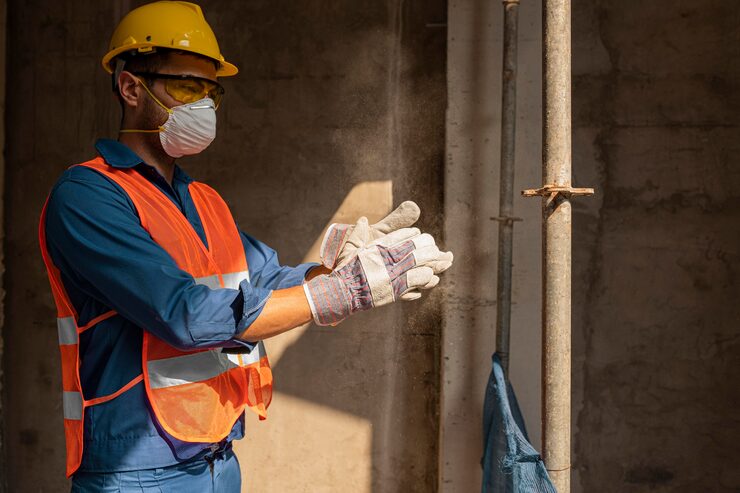Building or renovating a home is a major investment, and the framing stage is one of the most important parts of the construction process. Whether you’re designing a custom home or remodeling an existing space, working with a professional framing contractor ensures the structural integrity, safety, and longevity of your project. From load-bearing walls to roof trusses, precise framing lays the foundation for everything else that follows. This article will guide you through the importance of hiring a professional, what to expect during the framing process, and how quality framing impacts your home’s long-term value.
What Is Residential Framing?
Residential framing refers to the skeleton of a house. It includes the walls, floors, ceilings, and roof structure. Typically built from wood or metal, framing determines the layout, strength, and shape of the home. Every window, door, room division, and roof pitch relies on accurate framing.
Good framing is not just about putting up beams and studs—it’s about engineering stability. Done correctly, it supports the entire home while complying with local building codes and safety standards.
Why Professional Framing Matters
The quality of your home’s framing has a direct impact on how well it holds up over time. Poorly executed framing can result in uneven floors, sagging ceilings, misaligned walls, or worse—structural failure.
Here’s why professional framing is essential:
- Precision and Accuracy: Framing involves measurements down to fractions of an inch. Skilled contractors know how to work from architectural plans to ensure perfect alignment and balance.
- Speed and Efficiency: Professional framers work quickly without sacrificing quality, keeping your project on schedule.
- Code Compliance: A licensed framing contractor understands local regulations and ensures your home passes inspections.
- Problem Solving: Experienced framers can adapt to unexpected site conditions, changes in layout, or material issues without compromising safety or structure.
The Home Framing Process Explained
Understanding the framing process helps homeowners track progress and make better decisions. Here’s how a standard framing project typically unfolds:
1. Site Preparation
Before framing begins, the foundation must be complete and properly cured. The area is cleared, leveled, and inspected to confirm it’s ready for construction.
2. Floor Framing
The process often starts with the construction of the floor system. This includes installing joists, subflooring, and other support elements that create the base for the walls.
3. Wall Framing
Next, exterior and interior walls are built. Studs, headers, and sheathing come together to form each wall. Openings for windows and doors are also created during this stage.
4. Roof Framing
After walls are erected, the roof system is framed using rafters or pre-made trusses. This step is vital for protecting the interior and ensuring the building is weather-tight.
5. Final Bracing and Inspection
Once the frame is fully assembled, contractors add bracing and supports as needed. An inspector will check everything for code compliance before any further construction begins.
Professional home framing services provide not just physical structure but also peace of mind. From layout planning to execution, expert framers make sure the home is built to last.
Qualities to Look for in a Framing Contractor
Choosing the right contractor can save time, money, and future headaches. Here’s what to consider when hiring a framing expert:
- Experience: Look for a company with a strong portfolio of completed projects in your area.
- Licensing and Insurance: Verify that the contractor is fully licensed and insured.
- Client Reviews: Honest feedback from past clients reveals a lot about reliability and professionalism.
- Communication: A good contractor keeps you informed throughout the process, explaining each step and addressing concerns promptly.
- Warranty and Service: Reputable companies stand behind their work with a workmanship guarantee.

Cost Considerations and Budgeting Tips
Framing costs can vary based on the size of the project, material choice, and design complexity. Here are some tips to stay within budget:
- Get Multiple Quotes: Compare estimates from different contractors to get a fair price.
- Plan Ahead: Changes to framing plans during construction can be costly. Finalize your layout early.
- Choose Quality Materials: While cheaper materials may save upfront costs, they often lead to higher long-term expenses in maintenance or repairs.
Summary: Build Strong, Start Smart
The success of any home construction or renovation begins with solid framing. A skilled framing contractor ensures your home is structurally sound, code-compliant, and built to last. From the foundation to the roofline, every beam and board matters. By investing in professional framing services, you’re laying the groundwork for a safe, durable, and beautiful home. Whether you’re building from scratch or updating your space, trust experienced contractors who bring precision, reliability, and expert craftsmanship to every project.







